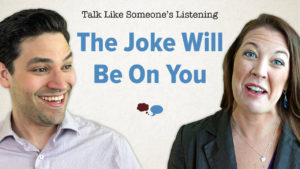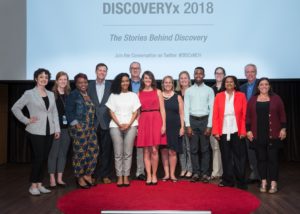
That’s all the time we have.
If audiences want short talks, why is it still so hard for speakers to oblige them? Here are three strategies we use when helping speakers to be more (much much more) concise.
Our blog posts offer a rich gathering of insights, tips and suggestions designed to help you become more polished, more influential and more impactful in how you communicate with others. Skim to a title that strikes your interests or needs. And come back often because we are serious keeping it fresh and useful for storytellers everywhere.

If audiences want short talks, why is it still so hard for speakers to oblige them? Here are three strategies we use when helping speakers to be more (much much more) concise.

While we admire the endurance of marathon runners and other long-distance athletes, the same can’t be said for speakers and presenters. When it’s time to

I am passionate about the power of breath. It not only makes for good public speaking, but it also helps a person feel grounded and confident in any area of life. Allow me to share a three quick tips to harness the power of your own breath.

Are you trying to sell the teddy bear… or the stuffing? See Ruth Milligan’s presentation to Columbus’ Web Analytics Wednesdays group to appreciate the relevant metaphor shared with her by an analytics client and her top list of components to assure a complicated, complex topic gets understood by their audience.

Step away from the thesaurus. Forget the jargon, too. To engage your audience as a reputable speaker, be relatable instead. Small words can make a big impact in your presentation.

Once a year, we enjoy an exhausting, exhilarating, thought-provoking discussion to identify the speakers for TEDxColumbus. What the discussions demonstrates is the commitment to identifying ideas worth spreading.

As coaches, we’ve seen it a thousand times before. Speed talker syndrome. Sometimes it happens when a speaker is excited or just plain nervous. Other times it’s the guy who tries to fit 38 minutes of content into a 7-minute presentation. To increase your credibility and make a better impression, slow it down. Take a breath, or 10.

So, are your presentations for your audience or yourself? Are they thoughtfully planned stories with which your audience can relate? Convert your conversation into a presentation.

Use too much humor in your speech? The joke will be on you. Watch the latest episode of Talk Like Someone’s Listening to learn how to engage your audience without losing credibility.

It’s safe to conclude that when a client “wins,” we win too. In the spirit of transparency, let’s look at where those win were for
Yesterday Ecolab (St Paul, MN) hosted their second extremely successful “StratChats” revealing insights and stories rolling up to their 2020 Global Strategy. We were proud

In the last few years we’ve delightedly become adept in helping scientists (data to medical) and researchers (you name it) understand how to translate their insights to lay audiences. This second video in our Talk Like Someone’s Listening series gently reminds us that sometimes it takes careful effort to turn outward for others to access your insights.

An executive communication coach explains why one of the most powerful tools for improving public speaking and communication skill is recording yourself.

It’s been about 9 years since we opened up Articulation. Which means hundreds if not a thousand talks we’ve watched, coached, edited, coached again, reviewed,

I work with a lot of speakers sharing personal stories. Patient stories. Caregiver stories. Stories of triumph. Stories of overcoming impossible odds. Audiences crave these

I wonder what Albert Mehrabian would have thought of the Royal Wedding. Or more importantly, the news reports of the non-verbal behavior sightings at the

In the The Greatest Showman , P.T. Barnum uses a well placed story to recruit his first circus actor. The scene starts with a knock on

We kicked off the DiscoveryX program at Nationwide Children’s Hospital last week. Now in its third year, this Transforming Talks, a white-label TED-style talk event,